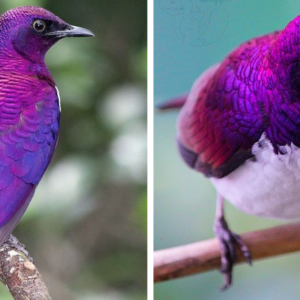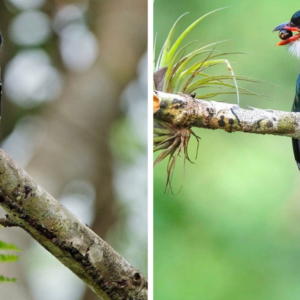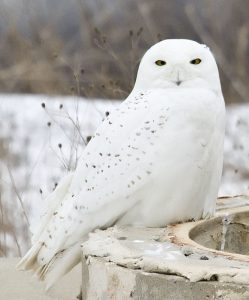
The regal Snowy Owl is one of the few birds that can get even non-birders to come out for a look. This largest (by weight) North American owl shows up irregularly in winter to hunt in windswept fields or dunes, a pale shape with catlike yellow eyes. They spend summers far north of the Arctic Circle hunting lemmings, ptarmigan, and other prey in 24-hour daylight. In years of lemming population booms they can raise double or triple the usual number of young.

The Snowy Owl can be found represented in cave paintings in Europe.
In some years, some North American Snowy Owls remain on their breeding grounds year-round, while others migrate in winter to southern Canada and the northern half of the contiguous United States. In the northern plains, New York, and New England, Snowy Owls occur regularly in winter. Elsewhere, such as in the Pacific Northwest, the Midwest, and eastern Canada, Snowy Owls are irruptive, appearing only in some winters but not in others.
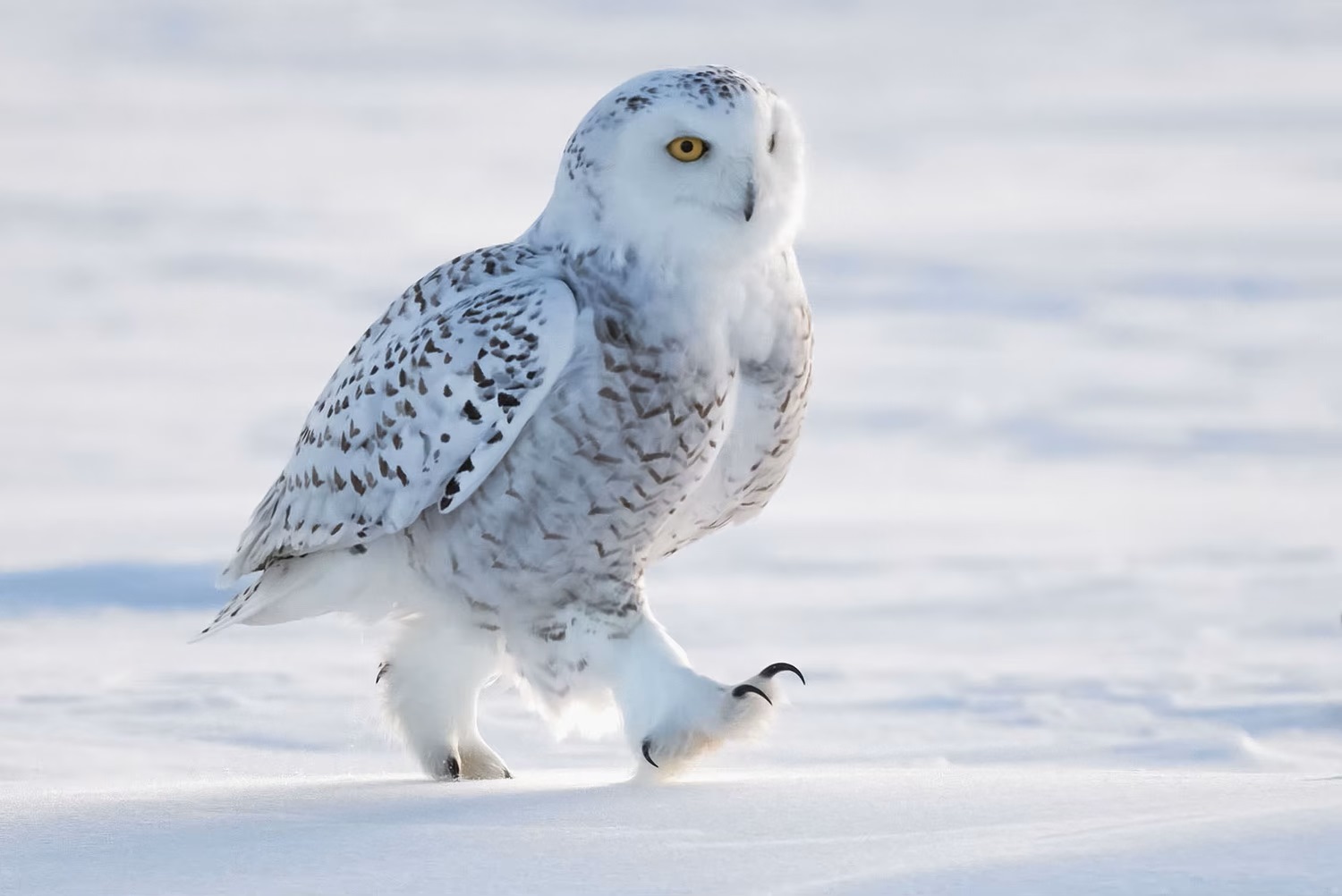
Male Snowy Owls are barred with dark brown when they’re young and get whiter as they get older. Females keep some dark markings throughout their lives. Although the darkest males and the palest females are nearly alike in color, the whitest birds—including the ones that played Harry Potter’s Hedwig—are always males and the most heavily barred ones are always females.
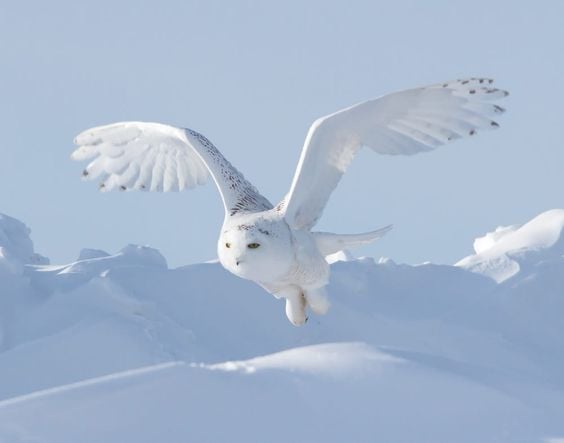
Snowy owls are territorial on their breeding areas, and sometimes their wintering areas as well. Some Snowy Owls defend their winter territories fiercely, even engaging in combat with other Snowy Owls (a behavior not recorded on their breeding territory). Some banded Snowy Owls return to the same wintering site year after year.
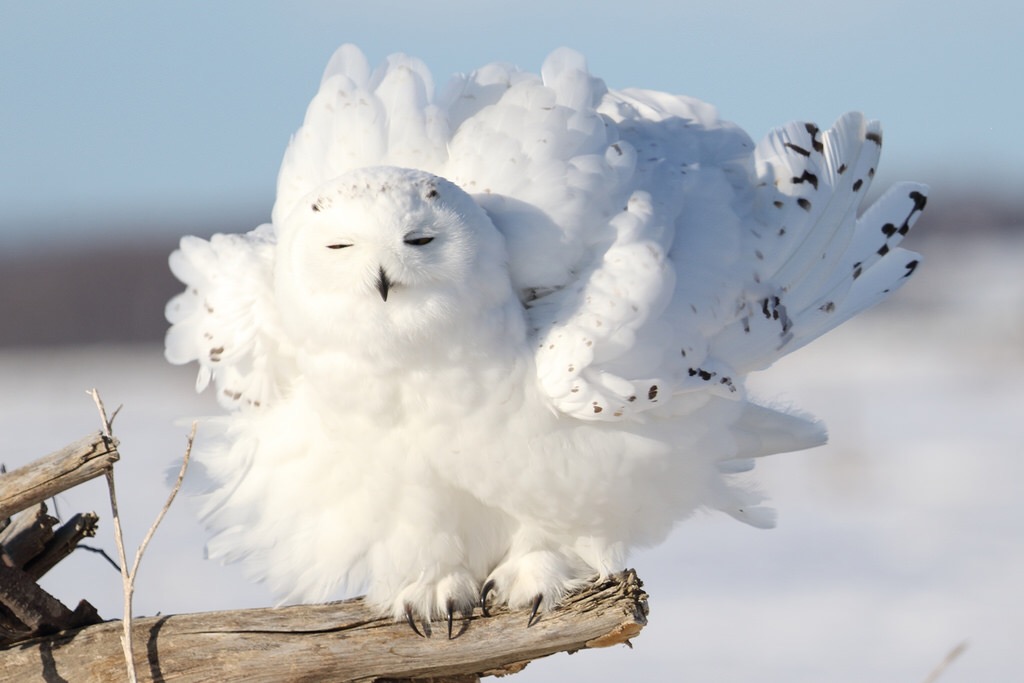
Unlike most owls, Snowy Owls are diurnal, extremely so. They’ll hunt at all hours during the continuous daylight of an Arctic summer. And they may eat more than 1,600 lemmings in a single year.
Snowy Owl young may disperse remarkably far from their birthplace. From a single Snowy Owl nest on Victoria Island in the Canadian Arctic, one young bird went to Hudson Bay, one to southeastern Ontario, and one to the far eastern Russian coast.

Thick feathers for insulation from Arctic cold make Snowy Owls North America’s heaviest owl, typically weighing about 4 pounds—one pound heavier than a Great Horned Owl and twice the weight of a Great Gray Owl (North America’s tallest owl).
John James Audubon once saw a Snowy Owl lying at the edge of an ice hole, where it waited for fish and caught them using its feet.
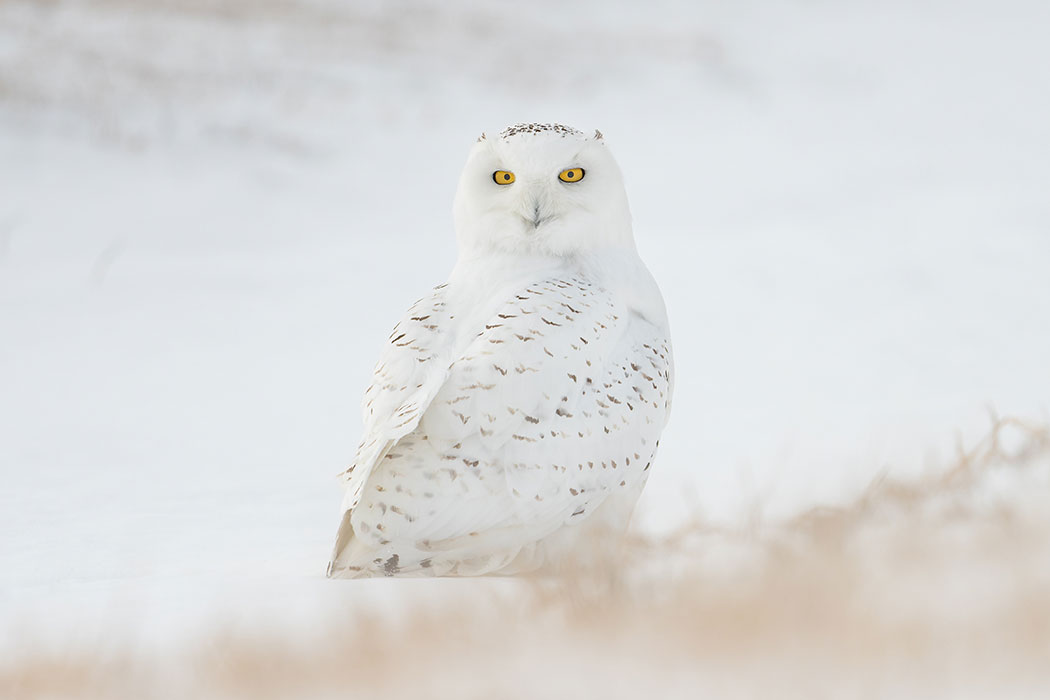
The oldest-known Snowy Owl was a female, and at least 23 years, 10 months old when she was recaptured and rereleased in 2015 during banding operations in Massachusetts.
https://levanews.com

